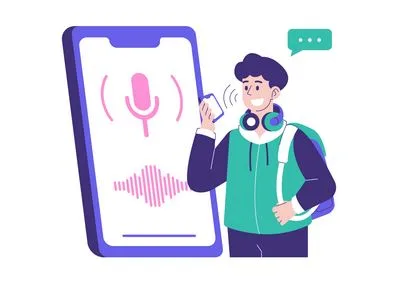
Voice search optimization is changing how people find information. With voice assistants like Siri, Alexa, and Google Assistant, searching online is easier than ever. People no longer need to type. They simply ask a question, and their device provides an answer. This shift means businesses must adapt. If your content is not optimized for voice search, you risk losing visibility.
Why Voice Search Matters
More people rely on voice search every day. It’s convenient, fast, and hands-free. Whether asking for directions, checking the weather, or searching for a product, voice search makes things easier. Studies show that over 50% of searches are now voice-based. This trend will only grow. Businesses that optimize for voice search will gain a competitive edge. Those that don’t will fall behind.
How Voice Search Differs from Text Search
Traditional text searches are short. People type phrases like “best pizza NYC.” But voice search is different. People speak in full sentences. They say, “Where can I find the best pizza in New York City?” This means voice search queries are longer and more conversational. If your content doesn’t match this pattern, it won’t rank well in voice search results.
Another key difference is intent. Voice searches are often question-based. They seek immediate answers. When typing, users browse multiple links. But in voice search, the assistant provides a single response. This makes optimization crucial. If your content isn’t structured properly, it won’t be chosen as the top answer.
Use Natural Language
People don’t talk the way they type. When speaking, they use natural, conversational language. Instead of searching “cheap hotels Miami,” they say, “What are the most affordable hotels in Miami?” Your content should reflect this shift.
To optimize for voice search, write the way people talk. Avoid complex jargon. Use simple, everyday words. If your content sounds robotic, it won’t rank well. Instead, create engaging, natural-sounding sentences. Think of it as answering a friend’s question.
Focus on Long-Tail Keywords
Short, generic keywords don’t work well for voice search. People don’t just say “weather.” They ask, “What’s the weather like in Los Angeles today?” This is why long-tail keywords are essential. Long-tail keywords are specific phrases people use when searching. Instead of “buy shoes,” a long-tail keyword would be “Where can I buy affordable running shoes online?” These keywords help target the right audience. They also improve your chances of ranking for voice search queries.
To find the best long-tail keywords, think about what questions your audience might ask. Use tools like Google’s “People Also Ask” feature. Incorporate these phrases naturally into your content.
Optimize for Questions
Most voice searches start with question words: “Who,” “What,” “Where,” “When,” “Why,” and “How.” People use voice search to get direct answers quickly. Your content should provide those answers in a clear and concise manner.
For example, if someone asks, “How do I bake a chocolate cake?” your content should have a straightforward answer. Instead of a long introduction, start with: “To bake a chocolate cake, you need flour, cocoa powder, sugar, eggs, and butter. Mix the ingredients, bake at 350°F, and let it cool.” Keep it short, simple, and direct.
FAQ sections are a great way to optimize for questions. Include commonly asked questions related to your topic and provide clear answers. This increases your chances of ranking in voice search results.
Improve Local SEO
Many voice searches are location-based. People often ask, “Where is the nearest coffee shop?” or “Find a plumber near me.” This means optimizing for local search is essential.
To improve your local SEO, update your Google Business Profile. Make sure your address, phone number, and business hours are correct. Use location-specific keywords in your content. For example, instead of just “best dentist,” use “best dentist in Dallas.”
Adding location-based content also helps. Write blog posts about local events, landmarks, or community topics. This increases your visibility in local search results.
Write in a Conversational Tone
Formal, stiff writing won’t rank well in voice search. Assistants prioritize content that sounds natural and easy to understand. This means your writing should flow like a conversation.
Instead of saying, “The primary benefits of a healthy diet include improved cardiovascular function and enhanced cognitive abilities,” simplify it. Say, “Eating healthy keeps your heart strong and your mind sharp.” This makes your content more relatable and easier for voice assistants to pick up.
Think about how you’d explain a topic to a friend. Keep sentences short and engaging. Avoid unnecessary fluff. The goal is to make your content as user-friendly as possible.
Optimize for Featured Snippets
When you ask a voice assistant a question, it often pulls the answer from a featured snippet. These are short pieces of text that appear at the top of Google search results. Getting your content into a featured snippet increases your chances of being the voice search answer.
To optimize for featured snippets, structure your content clearly. Use bullet points, numbered lists, or short paragraphs. For example, if someone searches “How to clean a coffee maker,” your content should look like this:
- Fill the water reservoir with vinegar and water.
- Run a brew cycle.
- Rinse with clean water.
- Wipe the machine dry.
Providing direct, well-structured answers improves your chances of being featured.
Speed Up Your Website
Voice search users expect instant results. A slow-loading website won’t rank well. Google prioritizes pages that load quickly, especially on mobile devices.
To speed up your website, optimize images. Large image files slow down loading times. Use compressed images without sacrificing quality. Enable browser caching to reduce load times. Choose a fast web hosting provider.
Mobile-friendliness also matters. Most voice searches happen on mobile. If your site isn’t optimized for mobile users, it won’t perform well. Use a responsive design that adapts to different screen sizes. Make sure buttons and links are easy to tap.
Mobile Optimization is Key
Voice search is most commonly used on mobile devices. People ask for directions, check store hours, or search for quick answers while on the go. If your site isn’t mobile-friendly, you’re missing a huge opportunity with regards to mobile SEO.
A mobile-optimized site should have fast loading speeds, easy navigation, and a responsive design. Avoid pop-ups that make it hard to access content. Make sure text is easy to read without zooming. Test your website on different devices to ensure a smooth user experience.
Conclusion
Voice search optimization is changing the way people find information. It’s faster, more convenient, and growing rapidly. Businesses that adapt will stay ahead. Those that ignore it will fall behind.
To optimize for voice search, use natural language. Focus on long-tail keywords. Answer common questions clearly. Improve your local SEO. Optimize for featured snippets. Ensure your website is mobile-friendly and fast.
The future of search is voice. Make sure your content is ready.







